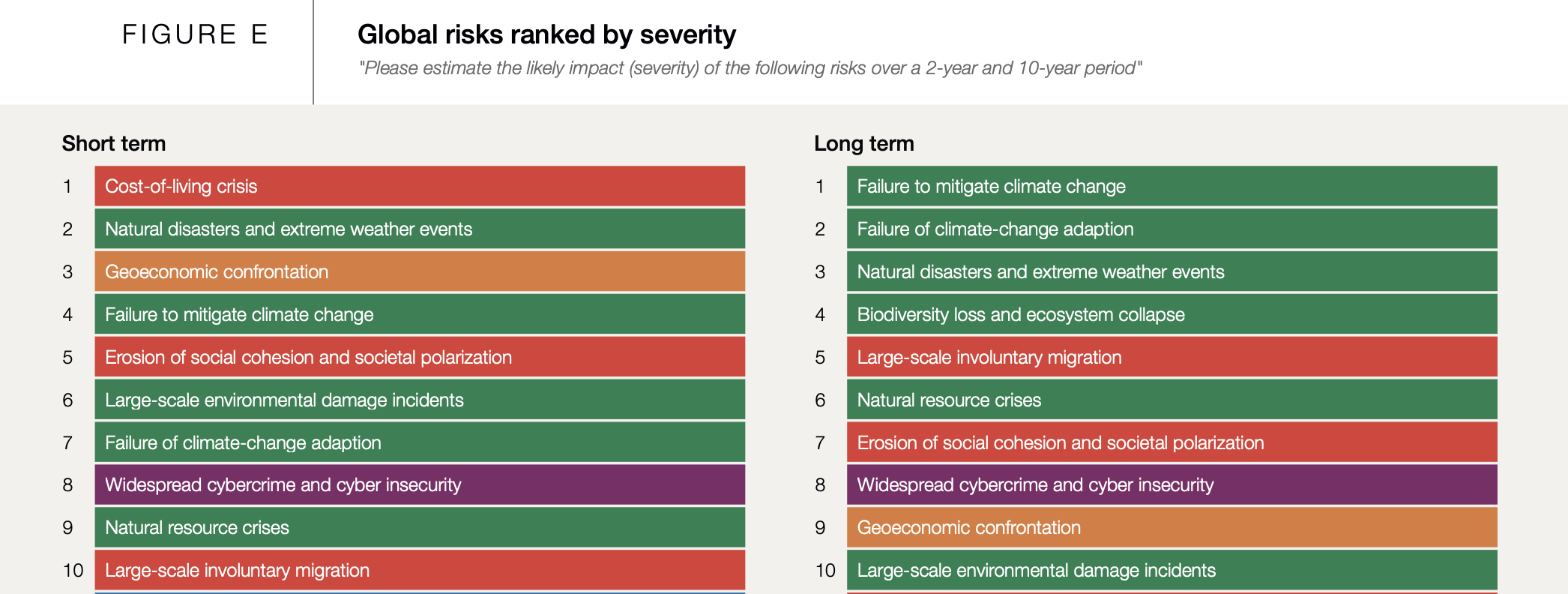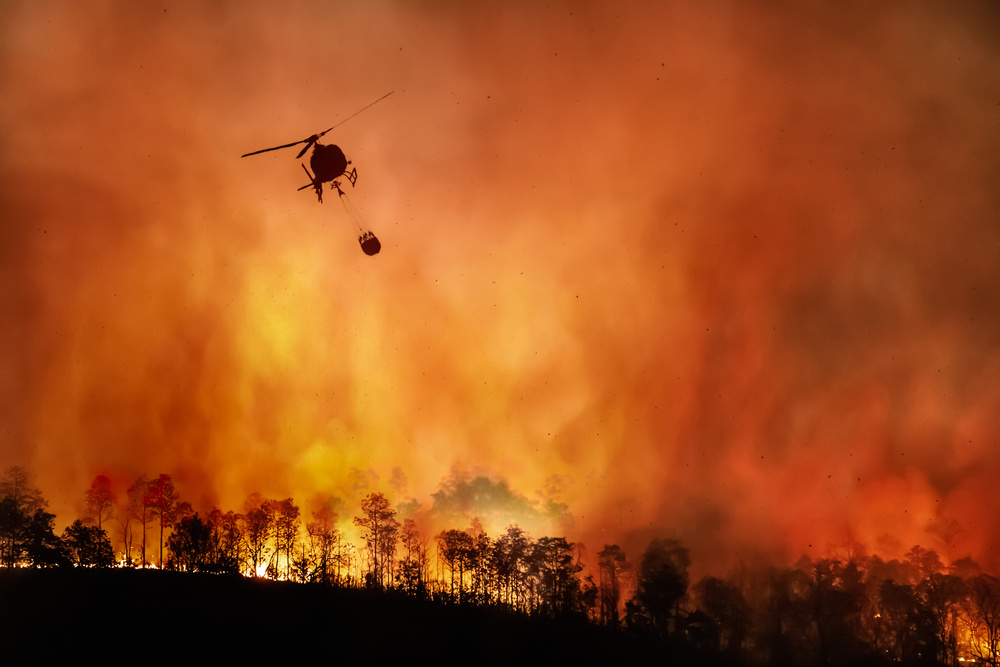
Older readers will remember a time when natural disasters were significant events. Today, they seem all too common. Does it feel like it is getting worse? It is! As the global economy stretches beyond capacity and national debt burdens far too high, the weight and impact of natural disasters will take a greater toll on our society. Technology and advanced health care are reducing the death tolls in this rise in scale and frequency of natural disasters, but they are getting more expensive.
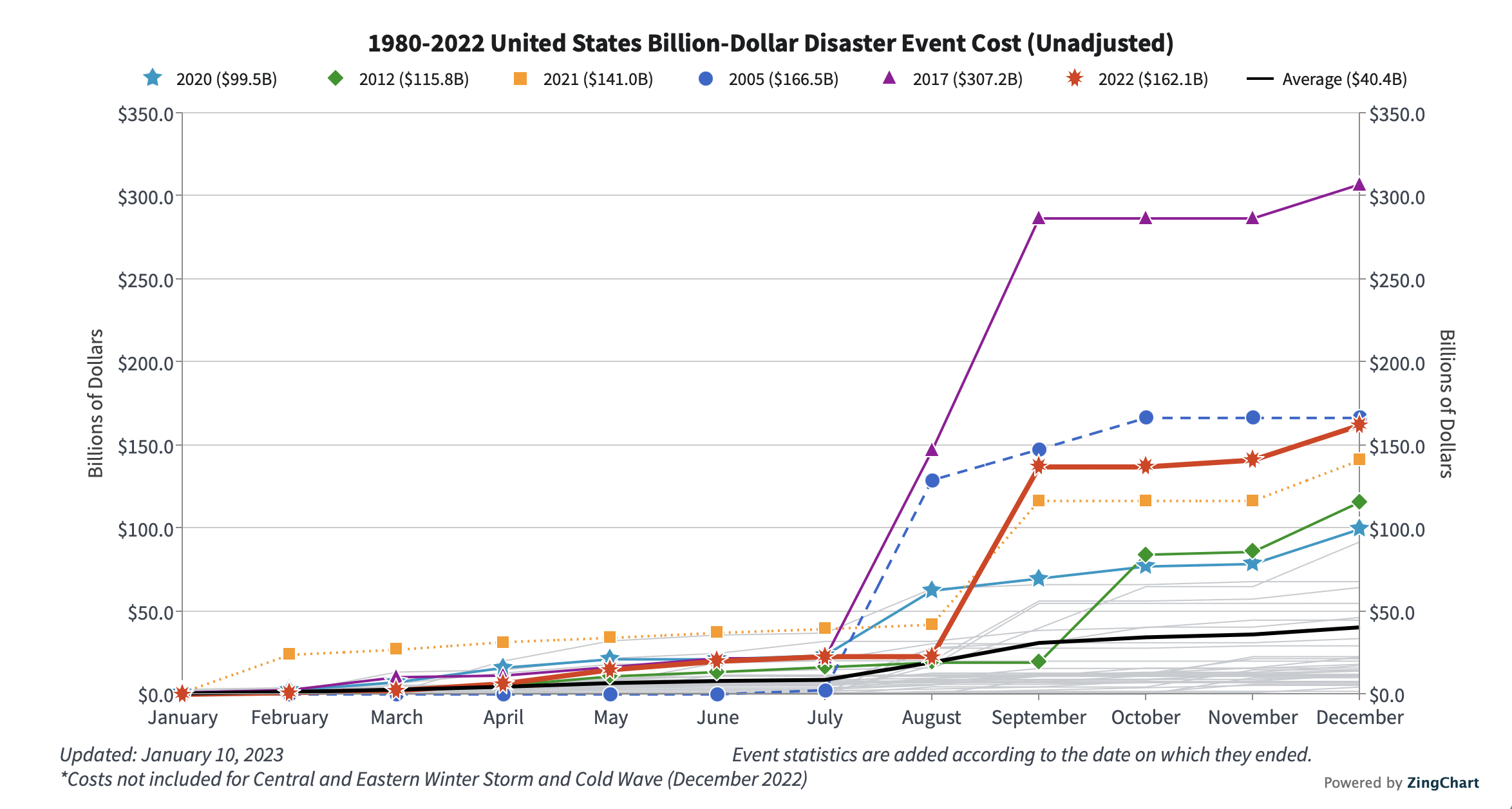
As the trend of these natural disasters trends upward and at higher expenses, many (though not all) represent the effects of climate change. As discussed in my recent article on polycrisis, the future is here, and many international organizations are waking up to the fact that we no longer have a solid reason to hope for things to improve.
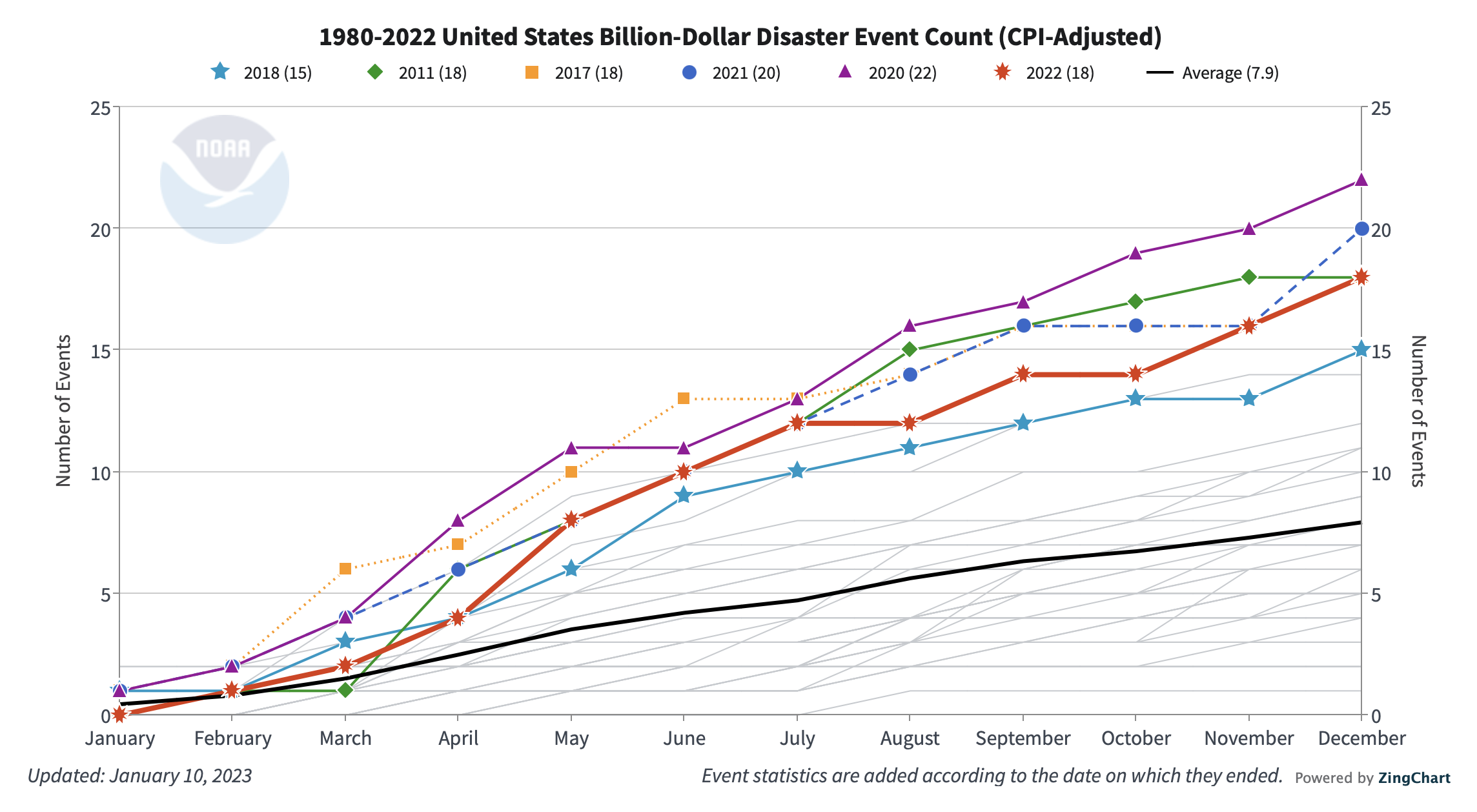
This year may be the first we have seen where the world economies and aid organizations cannot rise to the demand for aid and assistance in the face of natural disasters and extreme climate events.
Since 1980 the US has experienced 341 weather and climate disasters where overall costs reach $1 billion or more. The total bill for these disasters to date is $2.475 trillion. In the 1980s, the US averaged 3 natural disasters costing over $1 billion each per year. In the 2010s, that increased to 13.
According to USA Facts:
- Eight out of the 10 years with the highest number of natural disasters occurred in the last decade.
- About 43% of the billion dollar natural disaster events occurred in the last decade.
- About 45% of all flooding disasters tracked by the National Centers for Environmental Information and 54% of severe storm events occurred between 2013 and 2022.
- More than a quarter of all billion-dollar storm events occurred in the last five years (2017-2021).
- The average number of billion-dollar natural disasters per year during this period grew from about three per year in the 1980s to about 18 a year from 2017 to 2021.
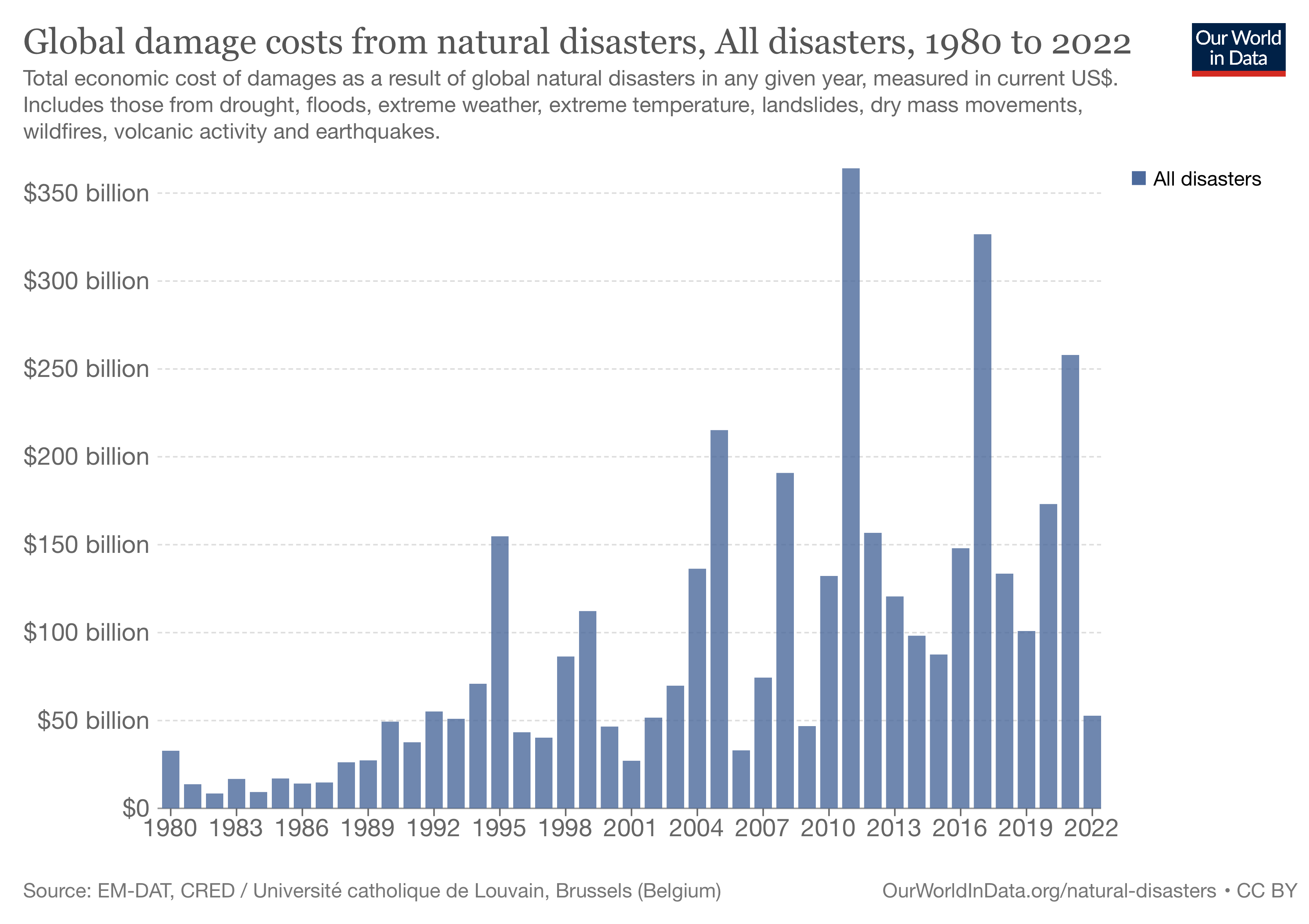
This is not an American phenomenon alone. Globally, the world has seen massive increases in three extreme climate disaster categories between 1980 and 2022.
The resulting cost of addressing damage caused by natural disasters has risen from $50 billion per year in the 1980s to $200 billion per year in the last decade. According to Institute for Economics and Peace between 1900 and 2019 the world experienced an increase from 39 natural disaster incidents in 1960 to 396 in 2019.
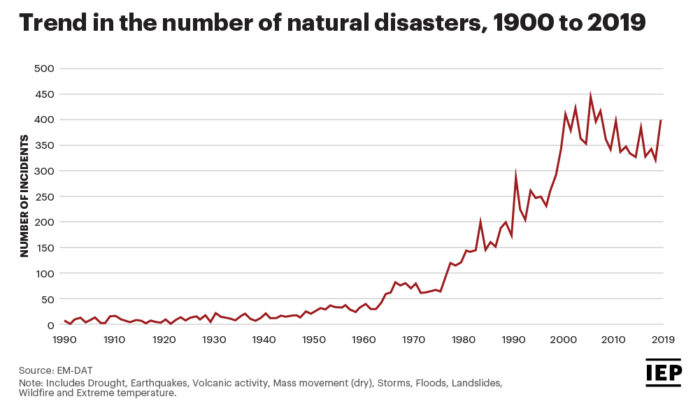
According to the agencies’ Atlas of Mortality and Economic Losses from Weather, Climate and Water Extremes, from 1970 to 2019, these natural hazards accounted for 50 per cent of all disasters, 45 per cent of all reported deaths and 74 per cent of all reported economic losses.
There were more than 11,000 reported disasters attributed to these hazards globally, with just over two million deaths and $3.64 trillion in losses. More than 91 per cent of the deaths occurred in developing countries.
Total economic damage from drought has increased by 476%
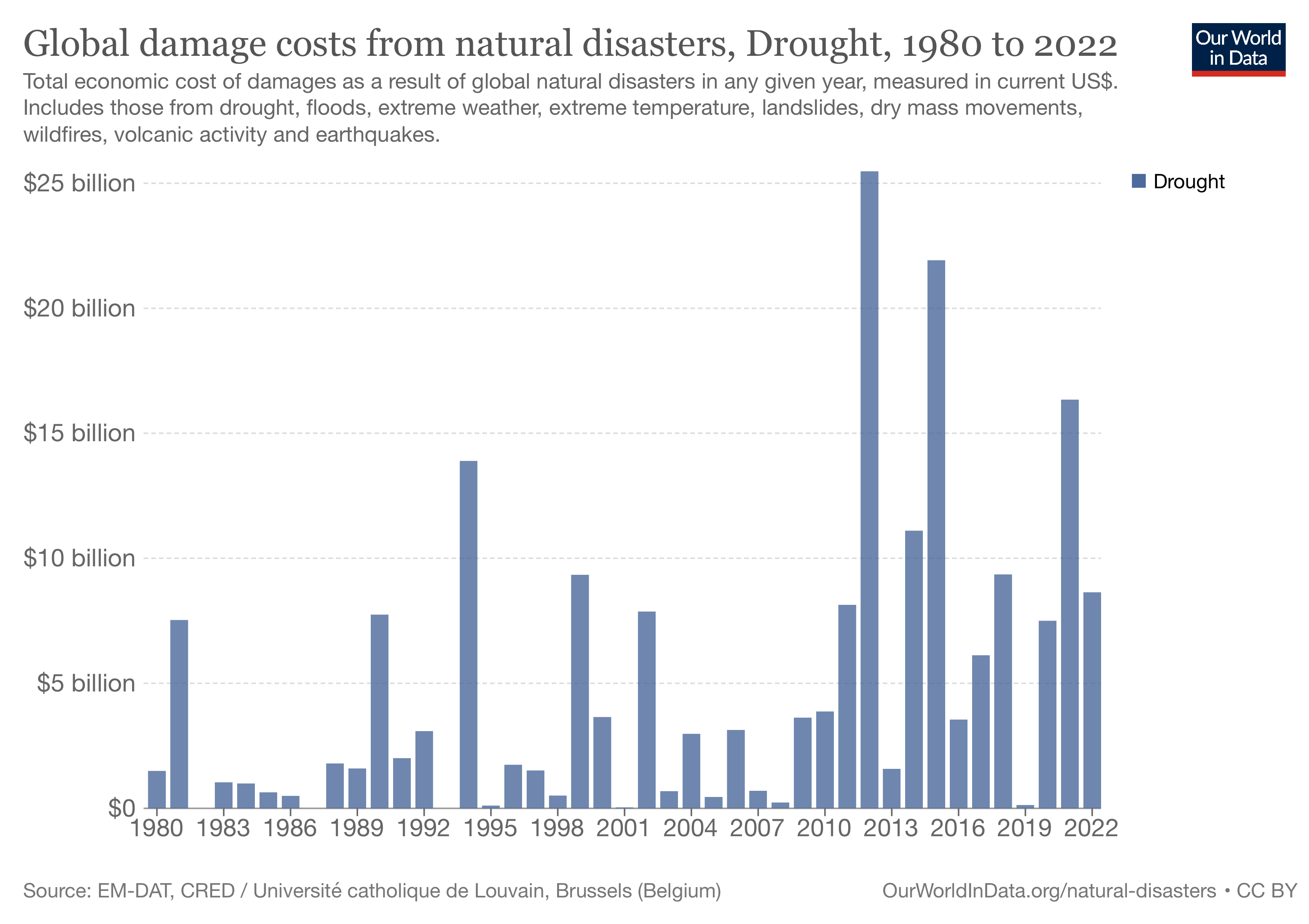
Total economic damage from extreme weather has increased by 718%
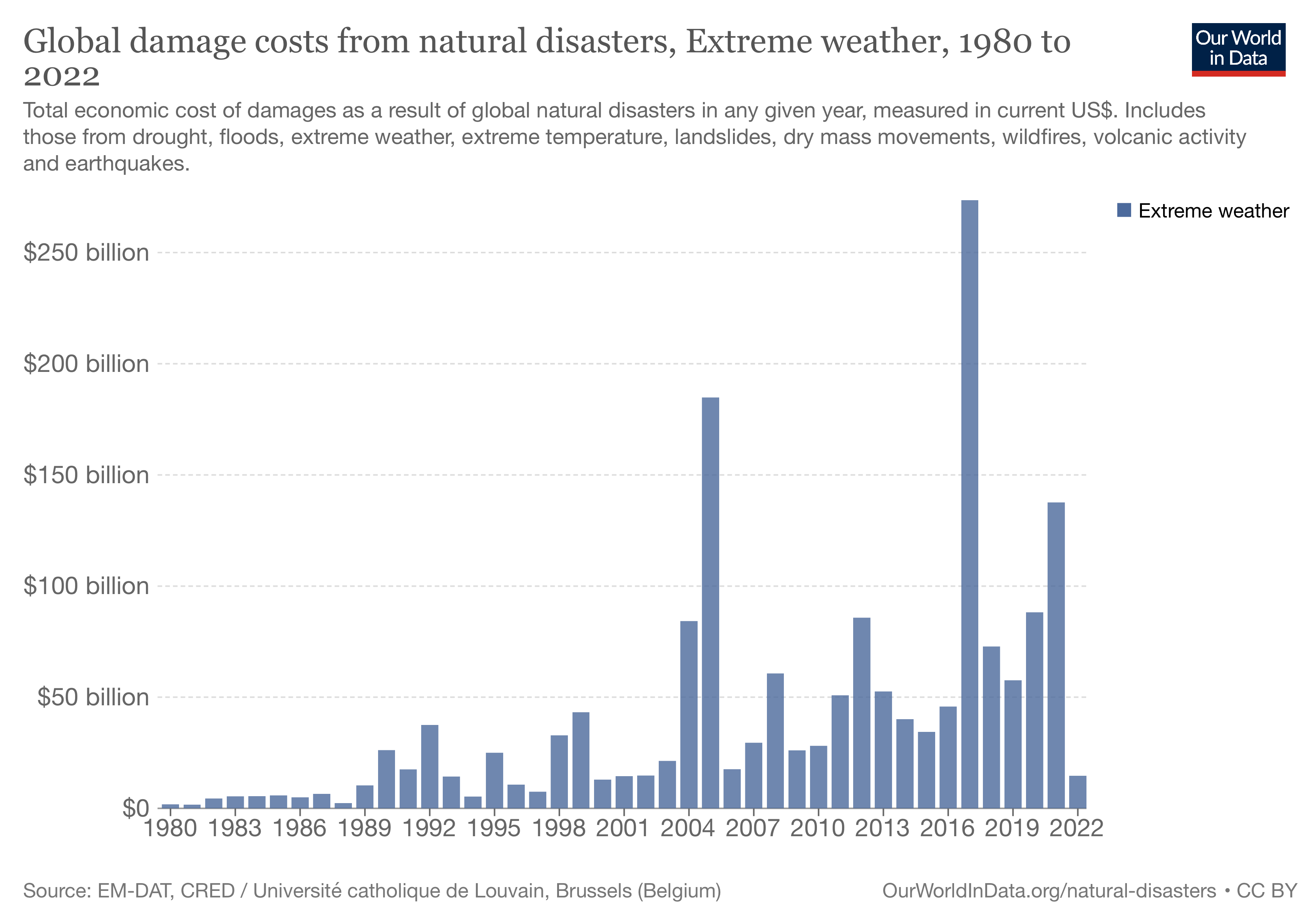
Total economic damage from flooding has increased by 1,567%
 The World Economic Forum placed natural disasters and extreme weather events in its top 3 short-term and long-term severe risks in its 2023 Global Risks Report.
The World Economic Forum placed natural disasters and extreme weather events in its top 3 short-term and long-term severe risks in its 2023 Global Risks Report.